You and I may be interested in iconic Vietnamese foods like pho and banh mi but many people in Vietnam are interested in trying something new. Something exotic. Something western. Over the weekend, Simon and Jeff alerted me to a New York Times story about Pizza 4P’s, a farm-to-table pizza restaurant in Saigon (aka Ho Chi Minh City). The pizza restaurant is owned by a young Japanese couple that decided to chuck a corporate financial life for culinary entrepreneurship in Saigon.
Pizza isn’t new to Vietnam as there are Pizza Huts and Dominos there. I remember seeing a California Pizza Kitchen knockoff years ago.
I haven’t been to Pizza 4P’s, which stands for “Platform of Personal Pizza for Peace”; they pledge to listen to customer preferences. Awkward and cultish sounding but all that aside, the pizza restaurant looks smart and upscale. The NYT story states that two-thirds of the daily 350 customers are Vietnamese. Those are people with money and Saigon certainly has a small population of big spenders. A number of boutiques in District 1 look like they were plucked from Singapore or Hong Kong. Yet, Vietnam’s annual per capita income is roughly $1,900.
Pizza 4P’s blends ideas that seem crazy but also very Japanese. For example, “mozza sushi” is among the appetizers. Prosciutto wrapped mango sounds like it could work, right? You can order an Asian-esque assortment of pickled vegetables that includes lotus root. The menu includes traditional margherita as well as a pizza topped with tuna curry and salmon miso cream. The chicken teriyaki evokes California Pizza Kitchen and Wolfgang Puck-style pies. The restaurant says that the eclectic menu fits local tastes.
Pizza prices range from 30,000 dong ($1.40) for a plain pizza made with “powdered cheese” (the stuff from a can?) to 300,000 dong ($14) for a Japanese beef pizza loaded with American beef or a “Prusshuo” pizza topped with prosciutto ham from Parma, Italy.
The nugget of extra interesting news from the story is that Pizza 4P’s owner, Yosuke Masuko, also opened a cheese production facility to make mozzarella, buratta, camembert and others. The cheese is used by the restaurant and sold to clients in Vietnam, Singapore, Japan, and Cambodia.
The Viet-made cheeses may not be the same quality as what’s imported from overseas but they are a lot cheaper. All the milk is locally sourced. Yes, there are people crafting Italian and French cheeses in Vietnam – a country where pho-mat has long been defined by Laughing Cow cheese (one of my favorites to this day).
To further control ingredient quality, there are farms growing for Pizza 4P’s, which makes the endeavor a Japanese farm-to-table pizza concept modeled on artisanal American and European food businesses in Vietnam. Aside from the owners, there are Japanese expats working in the business too. Five farmers are from Japan.
Pizza 4P’s opened in 2011 and is still going strong. I don’t see myself going there when I’m in Saigon but for locals, it must be a major treat. I was emailing about pho with Phi, who is based in Saigon, so I asked him for insights. He emailed this dispatch: "4P's is very good fusion pizza with creative recipes. Mostly for expats due to flavor and price."
A pizza shop like this is not likely to impact Vietnam in a major way because it targets elites. However, maybe the existence of Japanese beef pizza will result in a pho pizza?
What may have greater impact on Vietnam is the nation’s first McDonald’s, which opened in Saigon in early February. The opening got lots of play in the international press, and the following images are by photojournalist Neil Massey.
To acquire a McDonald’s franchise requires at least $750,000 in cash and a total investment of $1 to 2 million, according to this source. The person who brought McDonald’s to Vietnam is Henry Nguyen, the Vietnamese-American son-in-law of Vietnam’s prime minister. Henry was educated at Harvard and Northwestern.
A successful businessman who set up the first Pizza Hut in Vietnam, he always wanted to bring McDonald’s to the motherland. He worked at McDonald's when he was young, studied its operations in graduate school, and campaigned for ten years to get it there. McDonald’s is super cautious about going into new countries and Vietnam only recently relaxed some of the legalities, which explains why it took so long. How’s that for overseas Vietnamese returning to do business in Vietnam and the power of family connections?
During each of the first two days of business, there were supposedly 20,000 customers served at the McDonald’s in Saigon. How’d they move all those people through the restaurant? A motorbike drive through service:
How much do you pay at Macky D’s in Vietnam? A Big Mac is 60,000 dong ($2.80) and a Value Meal is 85,000 ($4). It’s a splurge, and according to the Wall Street Journal, it’s an aspirational thing for the relatively young and trend-conscious urban set. They want an ultra cool place to hang out. Understandably, they want to tap into the American scene, feel connected with the world.
I asked Phi about the new McDonald's and he responded, "McD's coming to Vietnam is good for the growing fast food industry, and is the benchmark in terms of service and consistent quality. It's a hit with kids, recruiting them with toys and sweets and offers another option for Vietnamese. On the negative sides, it's bringing all the modern preservatives, and pre-made food to Vietnam that is not healthy to anyone's diet, with already an emerging problem with children obesity. Price point is on high side for local."
American fast food chains and brands are opening up in Vietnam big time, according to the New York Times. If you visit, you may notice Pizza Hut, KFC, Starbucks, Burger King, Dunkin’ Donuts, Baskin and Robbins, Popeye’s, Dairy Queen, Carl’s Junior, Subway and now, McDonald’s. The news focus has mostly been on business opportunities rather than societal impact.
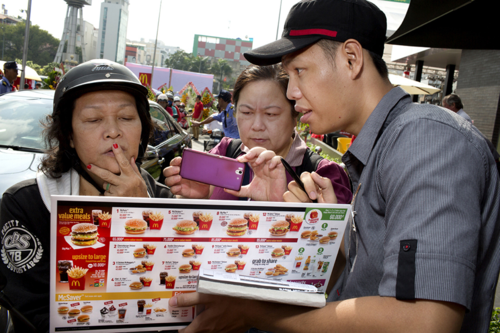
For example, few people are discussing the implications on Vietnam’s growing diabetes problem, likely due to westernization and urbanization. It’s the price of progress, some say. If Viet people love banh mi, they’ll warm up to hamburgers too.
I wasn’t clever enough to include a Big Mac banh mi in The Banh Mi Handbook but now I wonder: What would you put into a Big Mac banh mi?
Or, got thoughts on how fast food impacts developing countries? Here's your chance to weigh in.













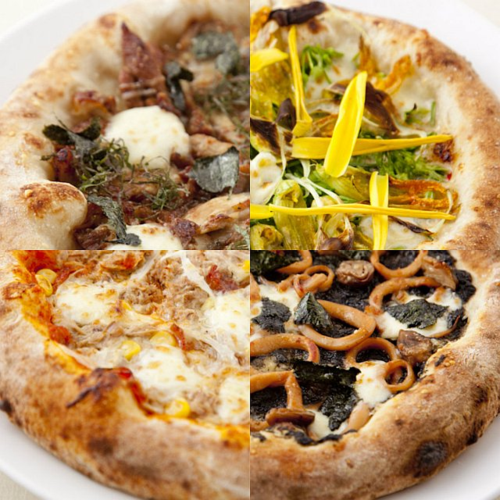
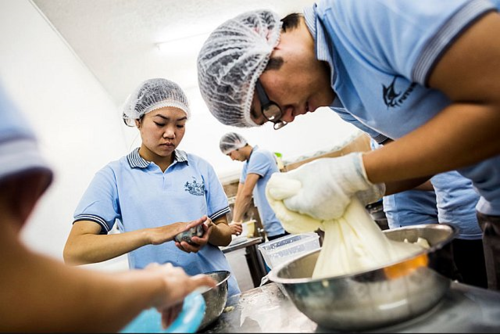
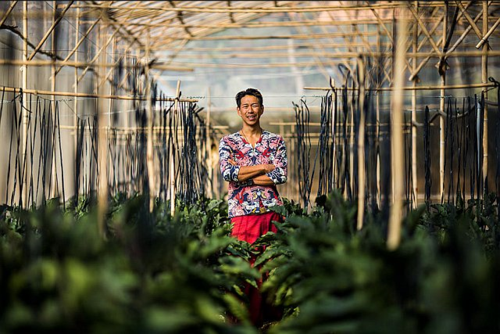
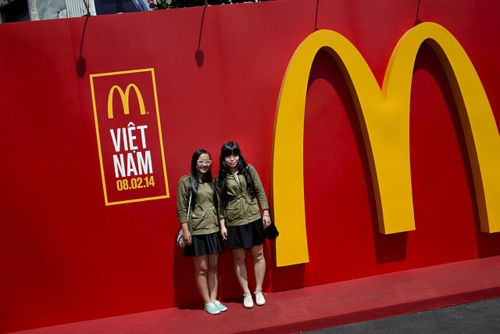
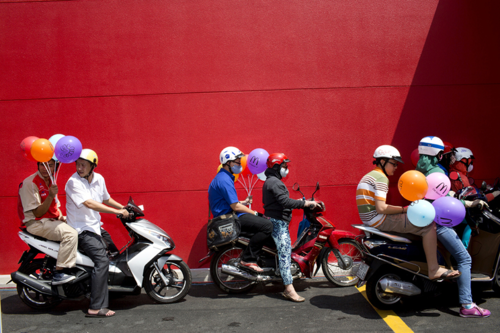




sunflowii says
i love the scrutinizing ladies! so seriouuuus. 🙂 but yeah, i'm sure what they come up with at home will be tons better than what's at McD's.
Andrea Nguyen says
You know it! Those Saigon ladies look righteous.
SimonBao says
A Vietnamese Big Mac? I haven't had a Big Mac in probably 14 years but I can imagine one. Instead of using a bun or forcing a baguette to make do, how about using one of those mini-Boules, one that's split in 3 and grilled? And make it a mini-Boule topped with sesame seeds. Fill it with two lemongrass beef patties - I think one of the ground beef recipes for Thit Bo Nuong Tia To/La Lot would do nicely. Add a "special sauce" of rich Viet mayo, chopped pickled cucumber, tomato paste, finely minced garlic, Sriracha, S&P, touch of sugar, thinned with just a touch of nuoc mam for salt and some lime juice... smear the toasted Boule slices with some Laughing Cow... top the beef patties with with leaf lettuce, chopped scallion, thin slices of cucumber and hot pepper, slender pickled carrot and daikon, a sprig of cilantro. I'd be very tempted to also toss some finely chopped Tia To-Purple Perilla on those burgers.
I'm fairly certain I never tasted Laughing Cow cheese till I was in the US, and rarely have it - but I commend those Vietnamese who have helped keep Laughing Cow in business. Toasted baguette smeared with Laughing Cow is a small triumph on a rotten morning.